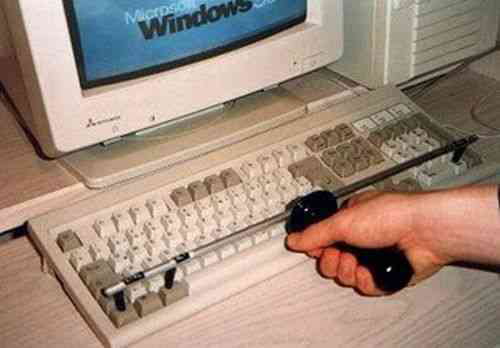Over the last few years I have spoken at a large number of conferences, from small meetups to really big developer conferences. Some talks I get invited to, some talks I know the organiser and agree on a talk, and most are through call for papers (CFP). I have been on the agenda committee for NDC Sydney for a couple of years, so I understand exactly what the people are looking for and how the selection process work, at least for that conference. It is not a straight forward process once you consider all the factors, and a single tweet from a fellow speaker made me consider what the process is.
Do you submit once you have just the idea? The outline? Or only once you’ve worked out the full content?
— David Wengier (@davidwengier) March 31, 2018
This is a great question, if you are new to conference speaking, or just aren’t sure how the process work. There aren’t a black and white approach to this, but let me attempt to fill in some of the gaps.
I have a Great Idea!
You might get the best idea ever, since someone invented the Ctrl + Alt + Delete wand.

You might event want to speak about it and submit a talk to a conference. And this is what David’s question is asking. At what point does your brilliant idea become a submission to a CFP? At what point do you think “Yes, this is the right talk to submit for DevSponge 2018”? I can only speak from personal experience and anecdotal evidence from other speakers and colleagues, but “it depends”. It depends on your speaking experience, it depends on the conference, it depends on the idea you have, it depends on your expertise and knowledge within the subject matter.
For me personally, this is my general process:
- Get inspired by something I read, something I watch, a new tool I try out, a conversation I had.
- Write down some dot points about what a possible talk could include. This is usually 5-10 sub-topics that could form a story.
- Submit the sucker! Seriously, most of the my talk submissions for new content will be submitted at this point. Here is a great blog post for writing your submission.
- Wait for the CFP process to be finalised.
- If accepted: panic (and get the talk written).
This may change, if I am not familiar with the subject area, in which case I need to research the idea and figure out if it is within my comfort zone, or at least general knowledge area. If it isn’t, I pretty much have to write out the entire talk to see if it makes sense. Generally though, I don’t. And I know that most others don’t either.
What is Enough to Submit?
Bear in mind that conferences can receive a ton of submissions. In my experience, you have to select about 140 talks from 800 submissions! And you have a day to do it. A day. This mean you are flying through submissions, often spending only seconds on each. For this reason, I don’t find it a good use of my time to write a whole talk to submit an abstract that will be read for seconds, and then possibly not accepted. Don’t for a second think you shouldn’t spend a heap of time on the submission. You do. But that is the title and abstract only. Refer to the article above from Niall on how to write one of those.
Therefore, enough for me is when I can tell a story with my abstract and feel moderately confident I can create a great talk from it. It really comes down to how much you are comfortable with not knowing before submitting a talk. For some people it is very little, for most it is some or a bunch. If you have done a lot of talks at lots of conferences, you quickly learn how the system works and then you do what is necessary.
How Many Talks Should You Submit?
This is always a tricky one to figure out. Let me start by saying that one submission is most likely not giving you the best chances of getting accepted. Bear in mind that the selection is choosing both you and your talk. If they like you, but the talk doesn’t fit into the event, then you are out. Always provide a choice of talks that you can give, so you increase your chances of being a fit and being selected.
Of course, there is the risk of getting all your talks accepted, which would be another panic. But that almost never happens, and if it does, let the event know if you can’t do them all.
Reuse
The last part isn’t really about submitting the right proposal, but it is crucial if you want to make a career of speaking at events. Reuse your material. The audience in Malmø, Sweden is very likely to not have seen the same talk given in Sydney, Australia. And with the amount of research and work that goes into a talk, make it into a blog post, a YouTube video, a shorter talk and anything else you can come up with.
[Update] Based on comments and feedback on this post, let me clarify that I very rarely give the exact same talk. Every time I reuse the talk, I make changes to it. I add new elements that might be relevant now, adjust segments that didn’t work 100% and change examples to be more relevant to the audience. Sometimes these changes take a while, but often they are minor to make the talk a little better.

